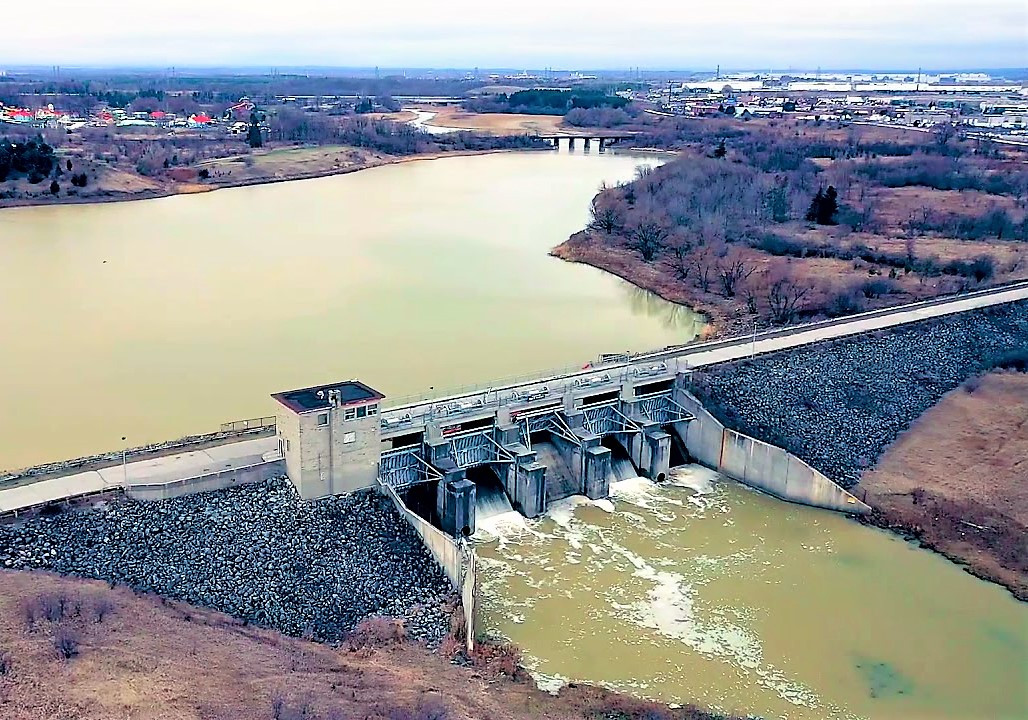
TRCA lacks funding to maintain critical flood protection standards; increased risks due to climate change
When cities and villages across Pakistan were turned into lakes last summer, the world once again witnessed the devastation of mass flooding.
Heavier than usual monsoon rains — between 500 and 800 percent more rain than the average recorded in some provinces in August — and a rapid increase in the speed of glacier melt due to a blistering heat wave killed over 1,700 people across the country and affected 33 million others who were sick and displaced without clean drinking water. The flooding has been described as the worst in the country's history and one of the costliest natural disasters the world has ever seen, with an estimated $14.9 billion (USD) in damages and an additional $15.2 billion (USD) in economic losses.
The cataclysmic weather saw an unprecedented level of international aid including $370 million in relief allocated from the World Bank and the allowance of $2 billion from current World Bank projects in the country to be redirected toward relief efforts.
Scientists estimate approximately 2.2 billion people — or just under 30 percent of the global population — live in locations expected to experience some sort of inundation during a once-in-a-century flood event. Just two decades ago it was estimated that such disasters only had a one percent chance of occurring in any given year. A study by Princeton University predicts these 100-year floods will now happen approximately every 30 years. Smaller floods are happening in prone areas, such as parts of Peel, much more often than that.
The region is warming at twice the rate of the global average, and while Peel has not experienced what Pakistan did, Brampton, Mississauga and Caledon have all witnessed heavy flood events over the past decade that are only expected to get worse.
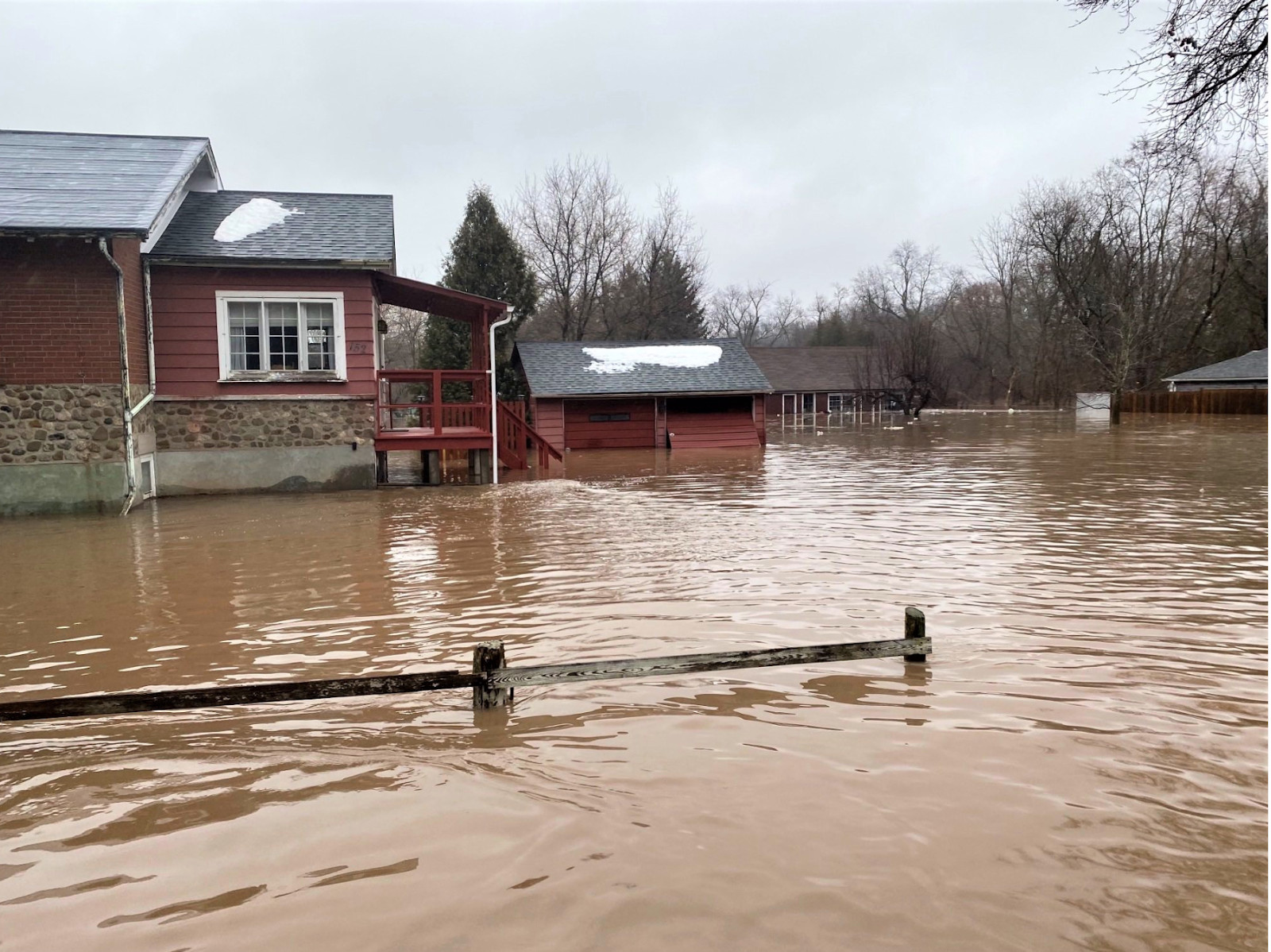
Flooding devastated Brampton’s Churchville neighbourhood in February of 2022.
(City of Brampton/Twitter)
In August 2022, an onslaught of rain ravaged parts of Brampton leading to extensive property damage and numerous calls to the City and emergency services. Water came down in sheets, flooding low-lying basements with dirty brown runoff causing widespread damage across parts of the region. Up to 100 millimetres of precipitation fell over a 24-hour period, surpassing the “normal” amount of rain that is typically recorded at Pearson International Airport over an entire month.
Earlier in the year, large parts of Brampton’s historic Churchville neighbourhood became an urban lake. When an ice blockage caused the Credit River to overflow, six feet of water submerged the adjacent neighbourhood that was built in a floodplain. The devastation led to the evacuation of local residents.
In 2013, record breaking rainfall hit the GTA, particularly parts of Mississauga, flooding watersheds that meander through the city while thousands of homes were damaged. Urban infrastructure was severely overwhelmed and resulted in 7,000 waterlogged basements, 900,000 households left without power and damages amounting to $1 billion. It was the most costly flood disaster in Ontario history.
Across Ontario, Conservation Authorities are mandated to conserve, restore and properly manage the province’s water resources, which includes supplying infrastructure, such as dams and dikes, to protect communities from potential disastrous flooding. Flood infrastructure is designed to protect people and their properties but the failure of such structures can result in the uncontrolled release of water into developed areas, heightening the need to keep all flood infrastructure up to standards.
But a new report from the Toronto and Region Conservation Authority reveals much of the flood infrastructure it manages is in serious need of repair, and the conservation authority does not have sufficient funding to keep up.
“TRCA’s portfolio of dams, dikes, and channels are aging, and many have experienced deterioration that could affect their performance, safety, and stability. Engineering specifications have also evolved to become more conservative, which renders older structures unable to meet new regulations, guidelines, and best practices. The regulatory framework for managing dams is constantly shifting as knowledge of hazards and risks advances,” the report reads.
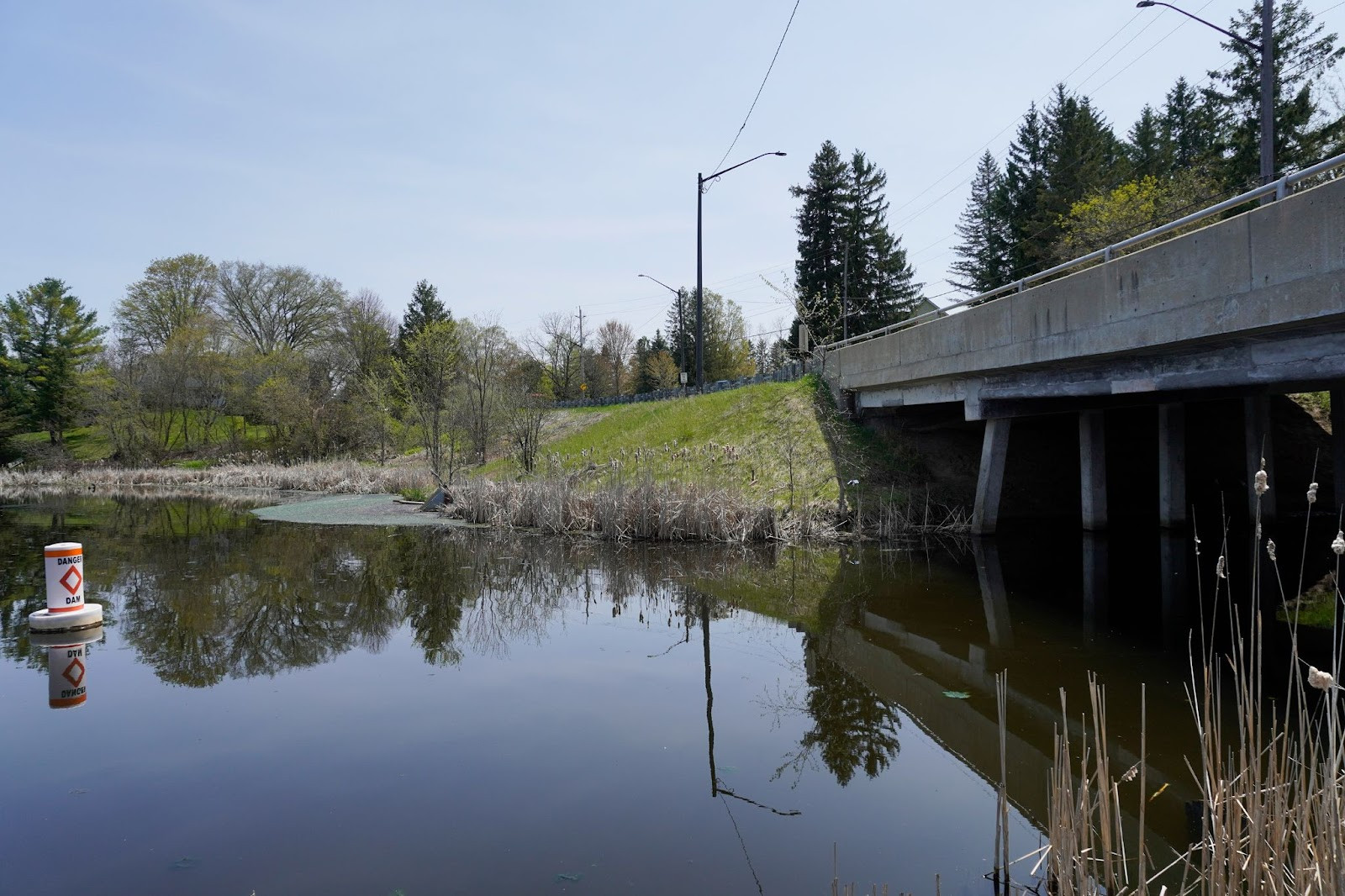
Dams and dikes are man-made structures that regulate water level and flow to prevent flooding.
(Alexis Wright/The Pointer)
Over the past 15 years, the TRCA has made critical strides in updating its flood infrastructure to protect communities. In 2021, the TRCA undertook a major maintenance project for the Bolton Dike. It raised the structure to meet flood protection requirements and erosion protection, cutting its risk score in half. This project alone cost $1.8 million. Without significant investment from the provincial government, the gaps in up-to-date infrastructure will continue to widen.
“TRCA is investigating opportunities to obtain adequate funding to undertake some of the major work required to make TRCA infrastructure fully compliant with current guidelines,” according to the report.
The TRCA has currently outlined 14 priority projects for maintenance and enhancement of flood infrastructure. The total cost is an estimated $34 million. Of the 14 projects, only one is fully funded, two are partially funded and the remaining 11 remain unfunded.
Six of the projects are labelled as high priority, but without sufficient funds from the province and other revenue streams, the lack of adequate infrastructure could put communities at risk.
Currently the TRCA receives funding for infrastructure upkeep through both provincial and municipal envelopes. Under Section 39 of the Conservation Authorities Act, the TRCA receives approximately $165,000 from the Ministry of Natural Resources and Forestry (MNRF) for natural hazard management which includes the operation and maintenance of flood infrastructure. This is complemented by levies provided by the municipalities that fall under the TRCA’s jurisdiction. In 2023, the TRCA will receive $669,000 split between Durham, York and Peel Regions, and the City of Toronto.
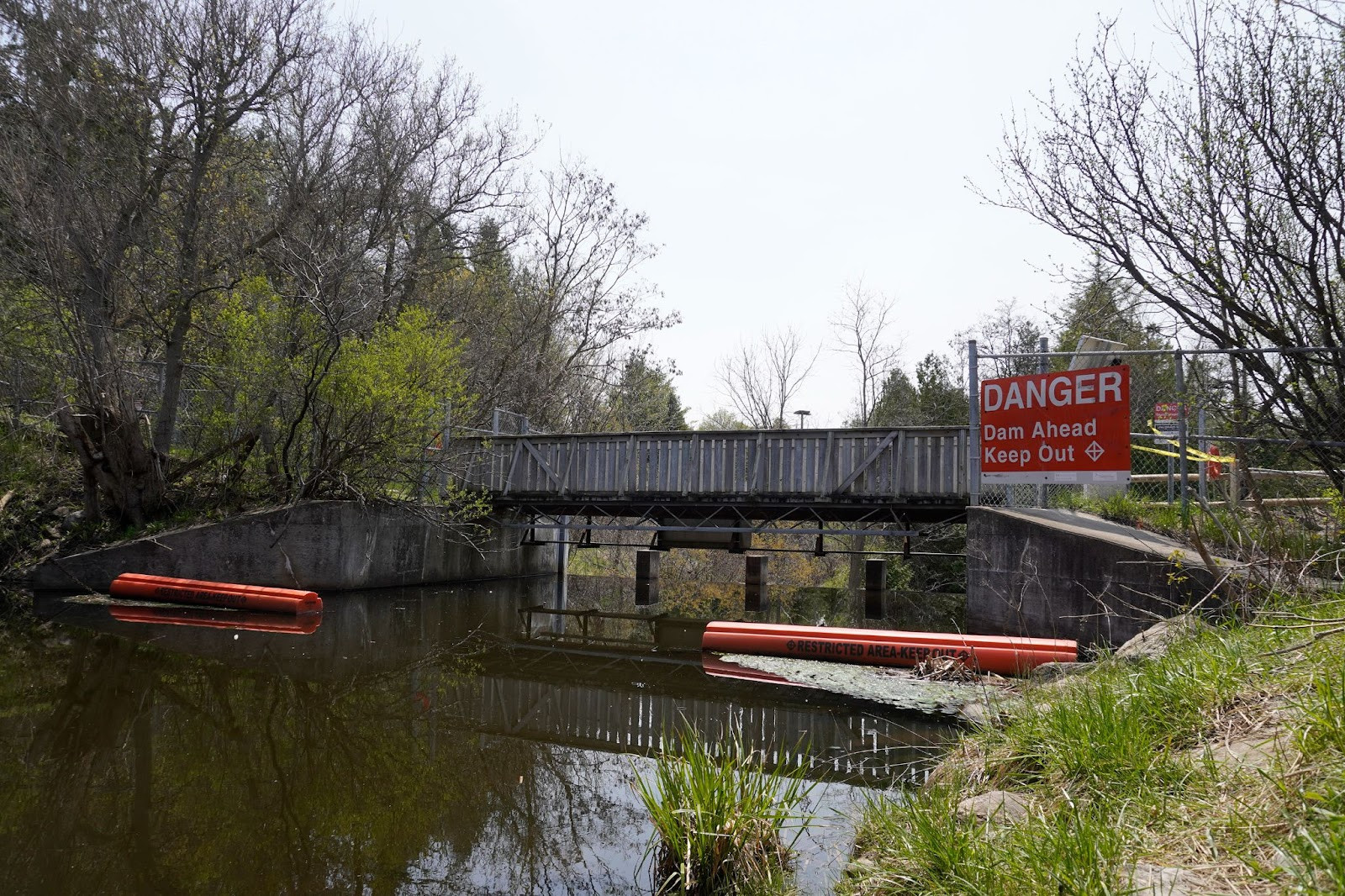
There are grants that exist for repairing flood control infrastructure, but of the few that are available, they often come with caveats.
(Alexis Wright/The Pointer)
Aside from the guaranteed monetary support from the province and municipalities, the TRCA can apply for additional funding through the Water and Erosion Control Infrastructure Fund (WECI) and the Disaster Mitigation and Adaptation Fund (DMAF). WECI supplies 50 percent matching in funds from the province of Ontario for repairs and studies on flood infrastructure. Conservation Authorities can apply for funding under WECI, where applications are weighted and funding is granted based on priority. The TRCA applies to WECI every year and has received some funding every year since 2016, with significant increases in the amount of funding granted over the past 2 years. In the 2022/2023 year, the TRCA received just over $600,000 from WECI.
DAMF is a federal grant that funds large-scale infrastructure projects to reduce risk, specifically flooding, wildfires and drought. A significant challenge with funding through DAMF is the requirement that the benefitting municipality match 60 percent of the funds. For many smaller municipalities, this is not feasible. The TRCA applied for DAMF funding in 2021 for two large-scale projects on the Stouffville and Palgrave Dams but was unsuccessful.
The MNRF told The Pointer in an email that conservation authorities are predominantly funded “by municipalities, self-generated revenue, and special project funding.” Aside from the aforementioned provincial funding opportunities, the MNRF did not suggest there will be any further opportunities for additional funding.
“While TRCA is seeking funding from all levels of government and communicating the risk to the public posed by aging flood infrastructure, there is the possibility that only some (or none) of the projects will get the required funding,” the report reads.
The TRCA is looking for more provincial funding at a time when conservation authorities are increasingly losing authority to protect residents and their properties. When the Doug Ford PC government pushed Bill 23 through the legislature late last year, it meant conservation authorities would no longer have the power to regulate or refuse permits based on “pollution or conservation of land”. The changes under the Bill will lead to a drastic decrease in wetlands that will be labelled as protected, opening up more areas to development that will put businesses and residents at greater risk of flooding.
Also released at the end of last year, Ontario Auditor General Bonnie Lysyk published a stinging audit of the provincial government’s handling of flood risks. It did not consider the impacts of the rushed legislation (which is aimed at building 1.5 million new homes across the province by 2031) but determined the PCs are doing very little to protect Ontarians from flood risks, providing insufficient funding for stormwater infrastructure and necessary data for flood mapping. She concluded the provincial government is failing to protect its 444 municipalities from flood risks — a problem that will only be exacerbated by climate change and the PCs’ hyper-aggressive housing strategy.
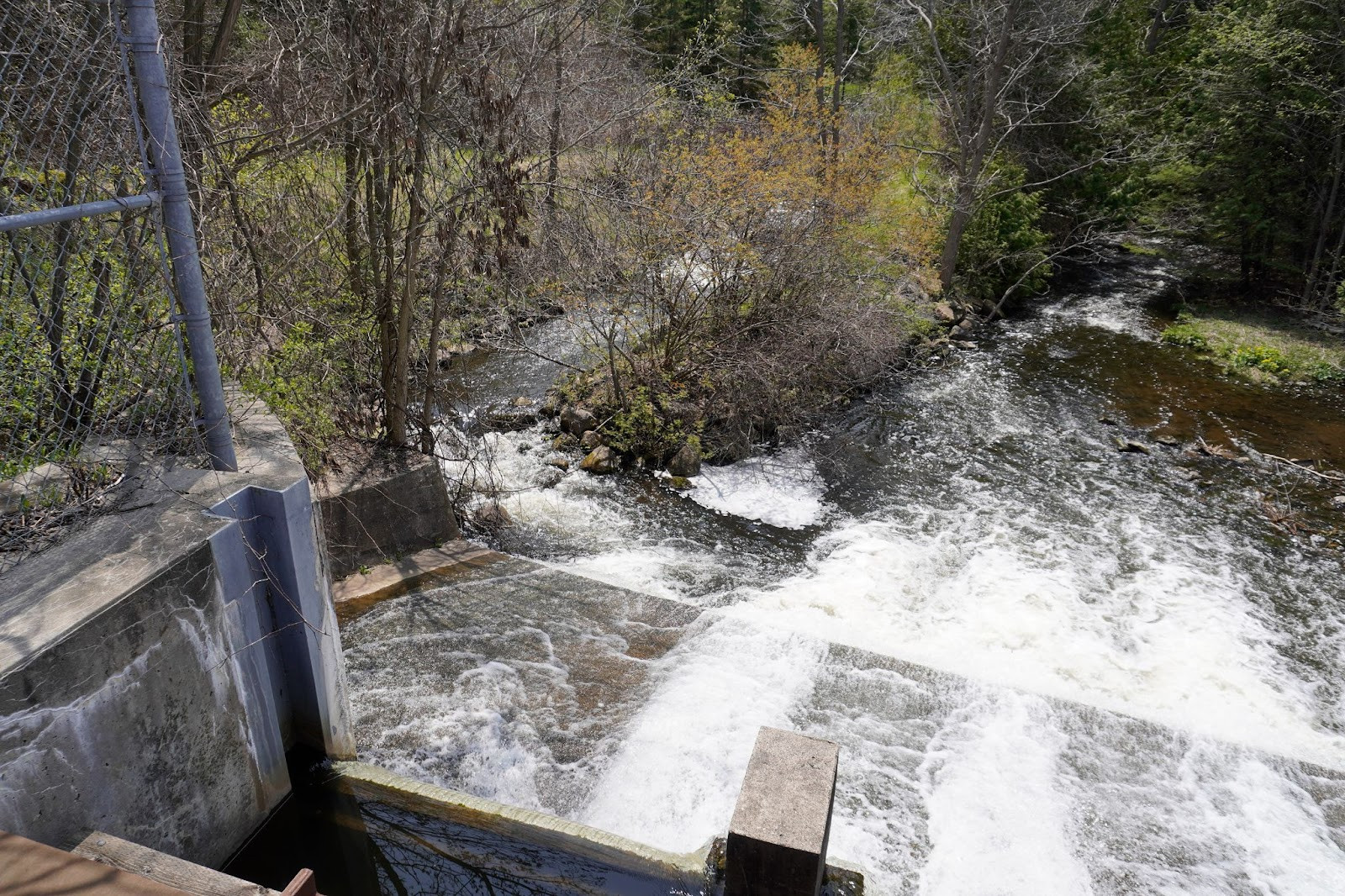
The standards and guidelines for dam safety are constantly changing as new technology becomes available and risk levels associated with worsening climate patterns evolve.
(Alexis Wright/The Pointer)
One of the most significant problems associated with dam infrastructure is that the standards and guidelines for safety are constantly evolving with advancements in technology and changes in risk levels.
“A dam built in 1970 would meet the guidelines for that period of time. As engineering knowledge progresses, the state of practice and standards change, and the dam built in 1970 would not meet standards in 2020,” the TRCA report points out.
With changes in best practices, infrastructure is continuously needing to be upgraded, which often comes with a high price tag. Insufficient funding has left the TRCA with a backlog of flood infrastructure in desperate need of repair.
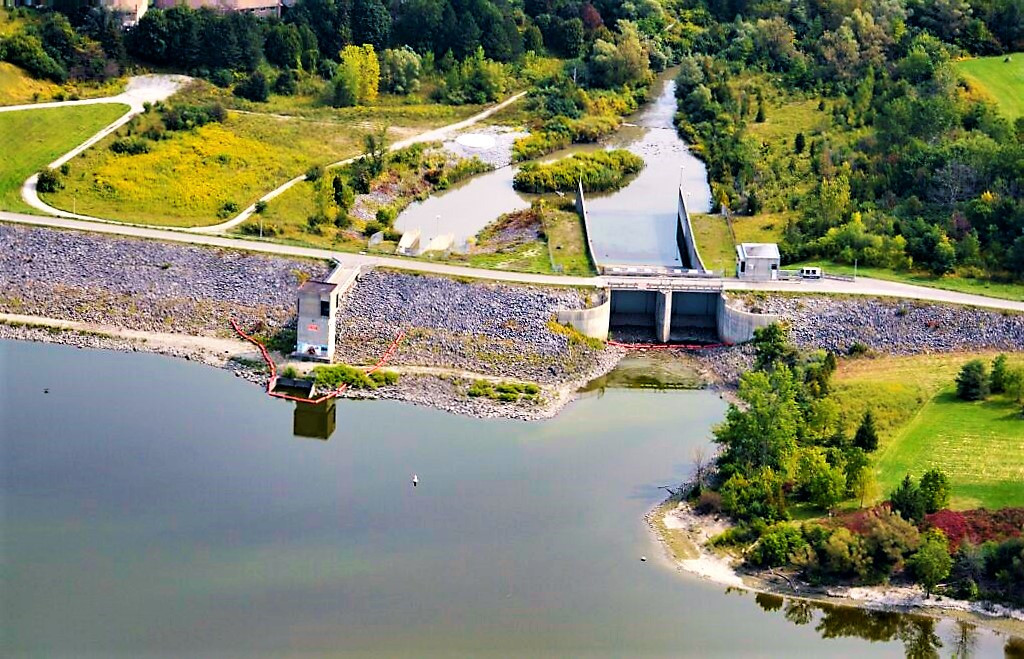
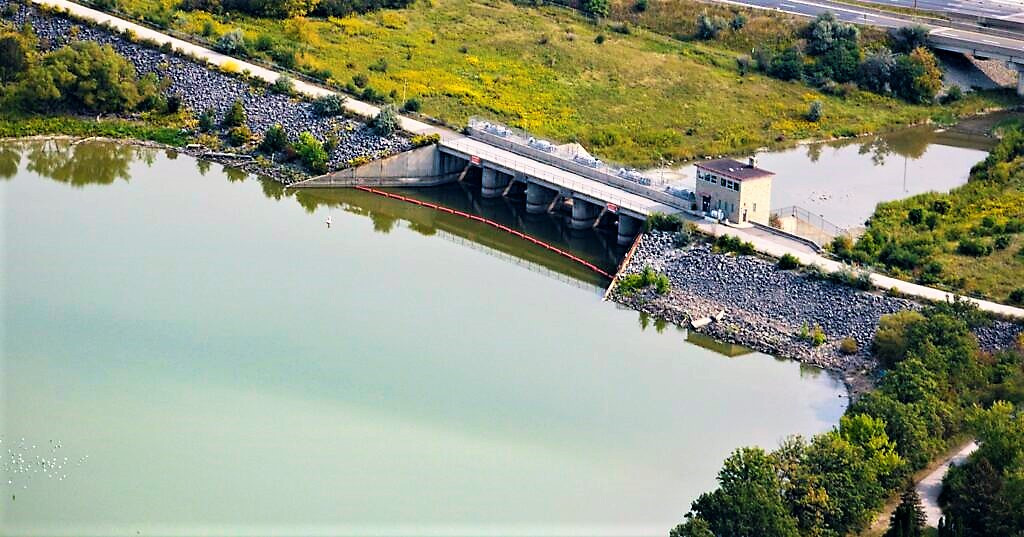
Bottom, the Claireville Dam in Brampton; and Top, the G. Ross Lord Dam in Toronto are the two biggest overseen by the TRCA.
(TRCA)
Its flood infrastructure is inspected monthly, with a more detailed examination annually — aside from its two largest dams which are inspected daily and have a 24/7 on-call dam operator. From these inspections, the TRCA uses a formula to determine the risk rating of each structure. First, a condition assessment of the structure is undertaken to determine its “probability of failing”. The structures are rated from “very good” to “very poor” which equates to a scale of one to five. The condition rating score is then multiplied by the consequence score which evaluates the risk to property and life during a structure failure. The structures are also rated from “insignificant damage” to “ major risk” on a scale of one to five. Once the two calculations are multiplied, the figure is added to a risk matrix determining the risk level of each structure with a higher number meaning a greater degree of risk.
The TRCA currently owns two dams which are in the “extreme risk” category, one is in Peel. The Palgrave Dam was originally constructed in the 1850s to power a mill. While the mill no longer operates, when the TRCA acquired the dam in 1973 it kept it intact to preserve the pond for the local heritage value. The Palgrave Dam currently has the following problems: spillway capacity which is too small increasing the risk of overtopping during extreme weather events; an earthen embankment that does not meet safety requirements; and upgrades needed to the log lifting system.
The cost to meet standards is estimated at just over $1.1 million and while the TRCA hopes to receive funding through both WECI and DAMF, as well as through the Investing in Canada Infrastructure Program, the project currently remains unfunded.
Email: [email protected]
Twtitter: @rachelnadia_
COVID-19 is impacting all Canadians. At a time when vital public information is needed by everyone, The Pointer has taken down our paywall on all stories relating to the pandemic and those of public interest to ensure every resident of Brampton and Mississauga has access to the facts. For those who are able, we encourage you to consider a subscription. This will help us report on important public interest issues the community needs to know about now more than ever. You can register for a 30-day free trial HERE. Thereafter, The Pointer will charge $10 a month and you can cancel any time right on the website. Thank you
Submit a correction about this story


